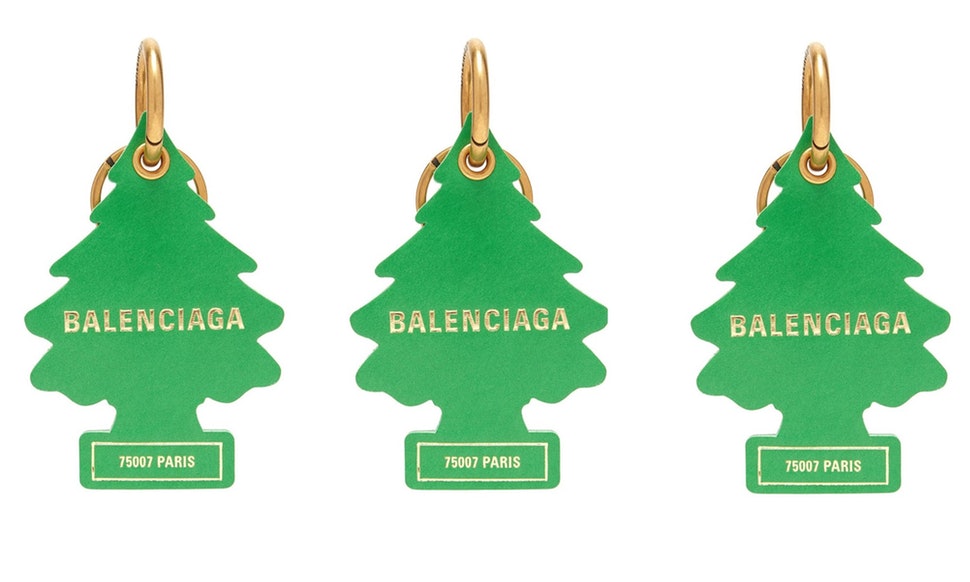Fashion label Balenciaga is being sued by air freshener company Little Trees for selling leather keyrings in the shape of their iconic pine tree product. Creative Director Demna Gvasalia who also heads up Vetements, has already come under fire for up-selling ‘low-brow’ culture for a hefty price. Remember that £185 DHL t-shirt for Vetements? And the £1,600 look-a-like IKEA bags at Balenciaga. Yet Gvasalia has been open in the press about his fascination with the everyday, once telling Vogue that “being down to earth is the new black”.
In January of this year, Gvasalia showed his men’s AW18 collection in the Aladdin’s cave that is the Saint-Ouen flea market, far from what you would imagine as being a prime show location for Paris Fashion Week. Yet is it possible that Gvasalia is simply trying to push the boundaries of what is considered fashion? In an interview with The Guardian, the designer claimed that “The fashion world isn’t the real world and my aesthetic is a kind of hyperrealism.” No one can knock the designer for his commitment to being ‘down to earth’ but there still remains the issue of his up-selling working class products for a substantial cost and commodifying a sector of society to the rich.
I think that Gvasalia, despite wrongly ripping off designs from working class culture, is simply seeking inspiration from outside of the norm. With each controversy that comes from Balenciaga or Vetements, Gvasalia can utilise the reaction to keep attention on the labels. These designs often generate attention because they’re outside of what we’ve come to expect from high fashion. Gvasalia is known for being controversial because he often steps outside of the restrictions of what we have seen on the catwalks. By taking inspiration from elsewhere, I’d go as far as to say that Gvasalia is simply reinstating the concept of fashion as art; he pushes boundaries and earns attention. He doesn’t restrict himself creatively and he takes risks.
At the heart of these controversies however, remains the ironic fact that the wealthy are happy to spend thousands on designs like the tree keyring or the DHL t-shirt or even the IKEA-like bag that could be authentically theirs for 50p. Playing with these boundaries is what sparks conversations around class and fashion and it’s important to be mindful of these issues.
Gvasalia is Georgian born, and was forced to leave his home with his family at just 10 years old at the start of the civil war. He has not necessarily had a privileged life, or even one in which you would expect high fashion to feature. Through his ability to take risks, he has managed to secure his title as Creative Director of a century-old fashion house as well as establishing an immensely successful and lucrative design collective. Having had a war-torn and uncertain upbringing, is it any wonder that Gvasalia is fascinated and inspired by the tropes of his own childhood and the working class?
By Harriet Timmins
Image: bustle.com

